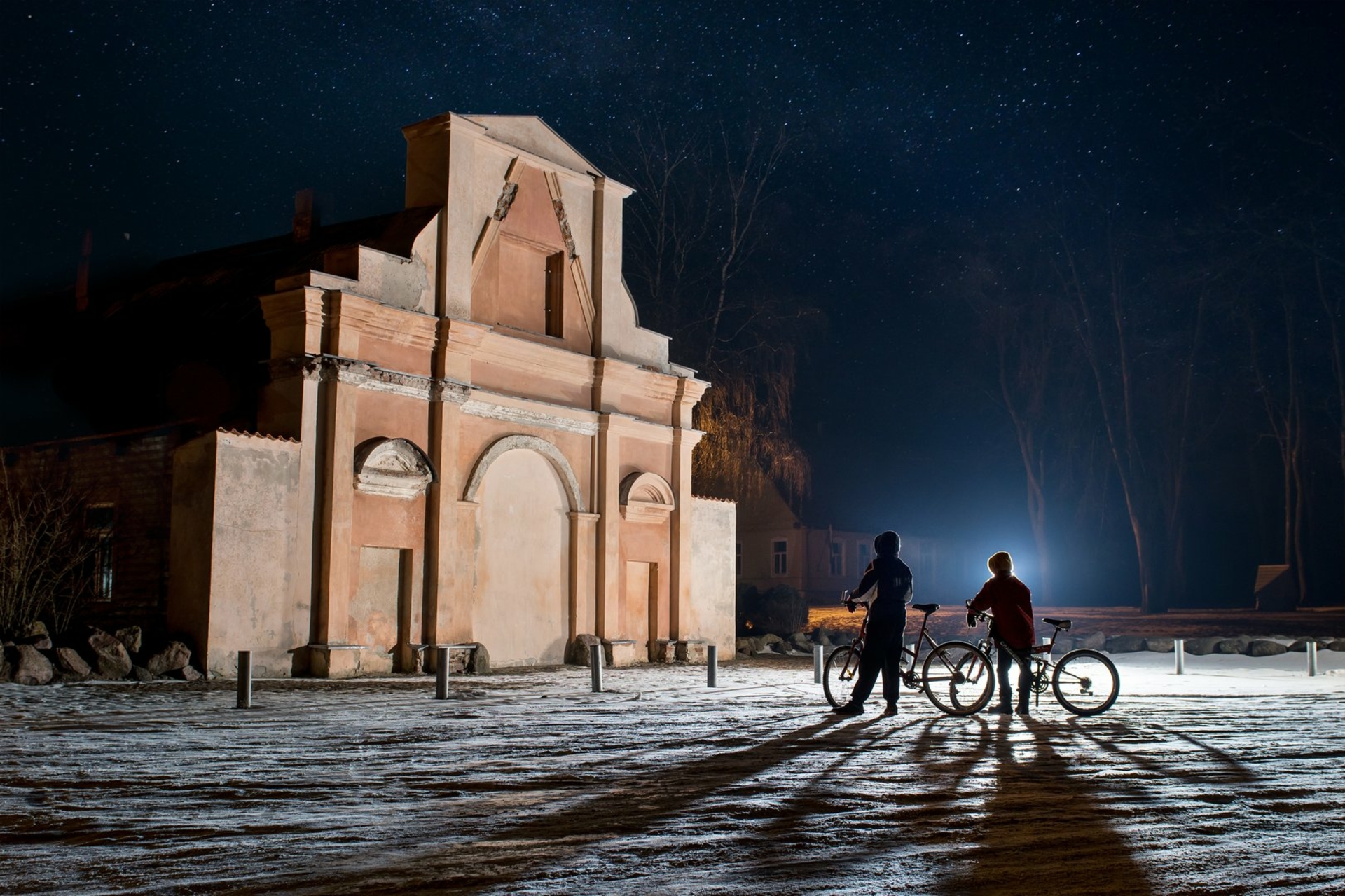

The quiet Paparčiai village is located 11 km from Žasliai. Its surroundings commemorate all stages of Lithuanian history. The site is an impressive Dominican Monastery Complex of the seventieth century with the biggest library of that time raised over this place before the uprising in 1863. A unique chapel and its gates in Baroque style have survived until the present time. You can find a hillfort located nearby, right beside Žiežmara river's loop. It holds the secrets of the settlement dating back to the Neolithic Age, including Laukagalis stone, the biggest mythological stone in Lithuania, previously used as an altar.
If you decide to visit Paparčiai in June, you can also participate in a traditional Baroque culture festival. If you come here any other time, we recommend visiting the most secret Aušrinė Marija Convent in Lithuania to listen to specific, liturgic chanting. A local community house in Paparčiai displays an exhibit dedicated to archaeological artifacts discovered on the territory of the monastery. You will also have an opportunity to participate in educational programmes related to ancient crafts.
A nearby botanical reserve covering a territory of 78.5 ha with unique slanting meadows and plants listed in the Red Data Book of Lithuania represents another place of interest.
We recommend spending at least a half day in Paparčiai to cycle or walk through the surroundings. Christian pilgrims that arrive here take a walking route of 4 km from Paparčiai to AušrinėMarija Convent located Paneriai village. The route is notable for tenrestoredwooden crosses embellished with traditional colourful sculptures made by Lithuanian sculpture craftsmen.
The Dominican Monastery was demolished after the uprising against the Russian Czar in 1863 because the monks helped the rebels. According to contemporaries, sixty carriages filled with books and art treasures were taken out from the monastery. Luckily, a chapel built nearby survived the times and is now open for visitors. The Monastery was painted with frescoes from the arches,down to the floor by highly skilled painters. Some of the frescoes were damaged because the chapel was used as a warehouse to keep fertilizers during the Soviet period. An explication made from stone dedicated to the Monastery complex and an information board for tourists can be found right in front of the monastery gates of Baroque style.
There is spacious parking on the territory of the monastery and a Šeimos namai to enjoy a family meal.
Reviews
There are no reviews. Be the first one to give a review!